There are few plants in the garden more satisfying to grow than bell peppers, one of the many types of peppers to fall under the scientific name Capsicum annuum.
Rich green leaves, a compact form, and brightly colored fruit make them a contender for even the most formal gardens.
I did say fruit. So many of the plants we commonly refer to as vegetables are actually fruit, including peppers, for the simple fact that they are seed bearing.
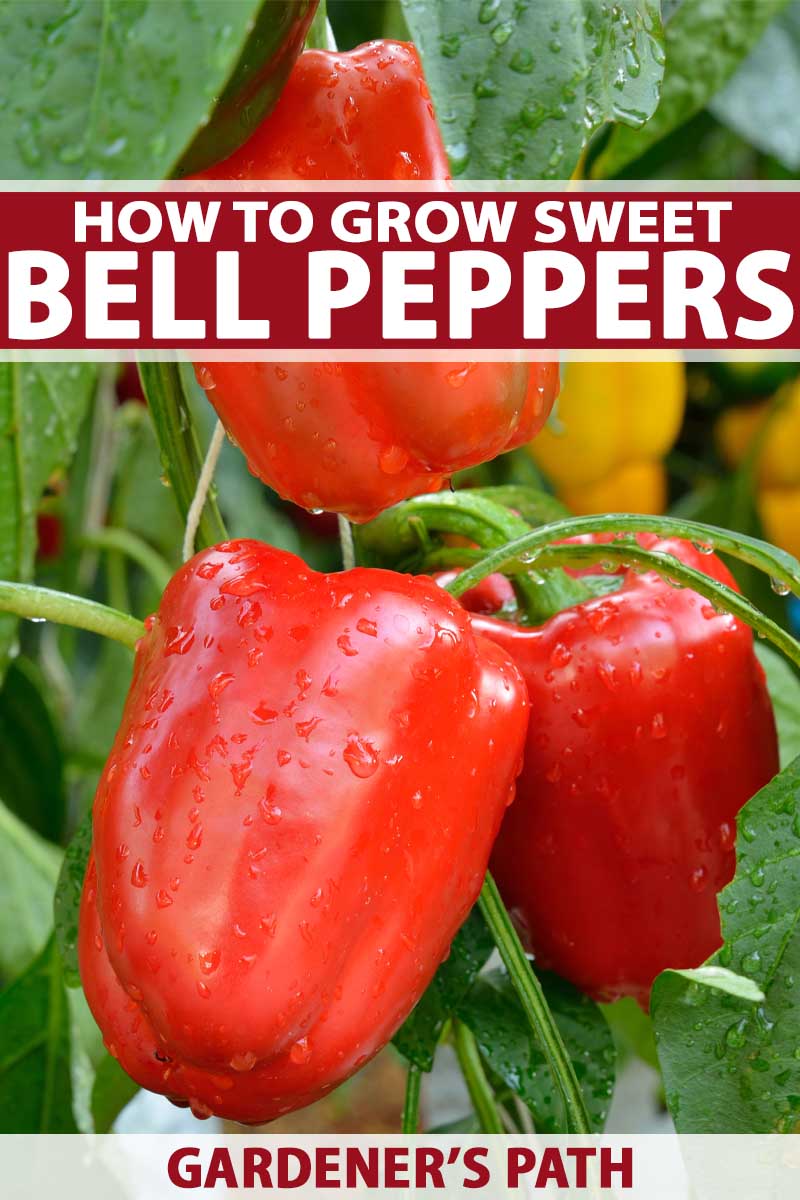
We link to vendors to help you find relevant products. If you buy from one of our links, we may earn a commission.
Peppers are believed to have originated in South America and Mexico.
From omelets to tacos, to pasta dishes and salads, sweet bells provide a tasty crunch to so many popular meals without the spice. But nothing beats the crunch of a freshly picked fruit.
It may seem intimidating for the beginner gardener but, as long as you know a few key pieces of information before getting started, bell peppers are fairly easy to grow – as long as the weather plays along, that is.

This article will walk you through it all, from starting seeds to transplanting seedlings to plant care and maintenance, so that you can grow and enjoy these beauties in your own garden.
What You’ll Learn
Start Early
Bell peppers are a perennial in tropical areas. But in colder climates, they are grown as annuals and they really have no tolerance for cold weather.
They require a fairly long growing season, often up to 90 or even 100 days, so the shorter your summer, the sooner you need to start seeds indoors.
It is possible to save seeds from organic store bought bell peppers. Collect seeds from red peppers, since they are more mature then green ones, and set them out to dry for a few days. Then sow them or store them in a paper envelope and place them in a dry location for safekeeping.
Definitely consider buying seeds as well, since one of the benefits to growing your own bell peppers is choosing from a number of otherwise unavailable varieties.
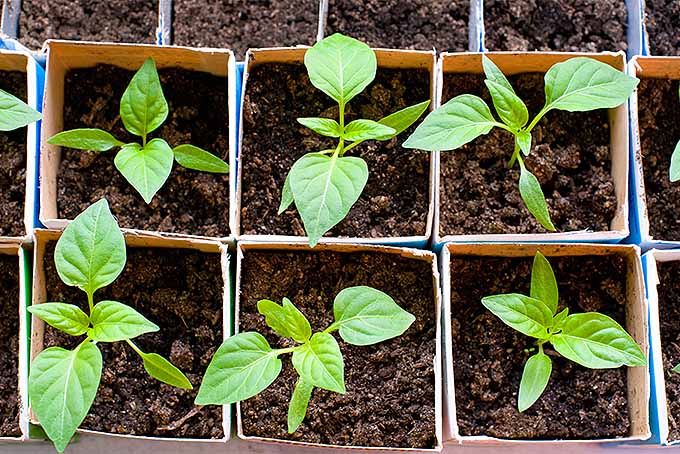
The rule of thumb is to start seeds 6 to 8 weeks before the last average frost date in spring. However, if you keep plants healthy and thriving, you can sow them even earlier.
Start seeds using a seed starting mix and place them in a warm, sunny spot. Covering flats or cell packs with plastic can help speed germination rates.
Providing a consistent source of heat, like with a seedling heat mat, will also help since soil needs to be around 80°F for seeds to germinate. If soil is warm enough, germination should occur within ten days.
Once seeds germinate and grow two to three true leaves, you’ll want to pot them in larger containers filled with damp potting soil to reduce settling. Add organic fertilizer according to label recommendations as well, to encourage strong growth.
Water newly potted plants well and keep them consistently moist.
What to Plant and Where to Buy
There are many different types of sweet bell peppers available on the market today, and they can be grown from seeds or started as seedlings. Let’s take a look at a few favorites.
Canary Bell
Slow and steady wins the race, when it comes to the yellow Canary bell. These take 100 days to reach maturity, but the long wait will be worth it when you get to enjoy these prolific 3 1/2-by-4-inch sunshine yellow fruits.
Tobacco Mosaic Virus resistant seeds are available in 1/4- or 1-ounce packages from True Leaf Market.
Big Red
Big Red takes about 75 days to harvest, turning from green to red as it ripens. This sweet pepper has very thick flesh with a mixture of 3- and 4-lobed blocky fruits.
A veggie patch favorite, seeds are available in a variety of package sizes from True Leaf Market.
Coral Bell
Vibrant orange Coral bell peppers are a welcome addition to the garden, growing vigorously and producing 4-lobed fruit that reach about 4-by-3 1/2-inches at maturity.
Seeds are available from True Leaf in 1/4- or 1-ounce packages. Expect 78-88 days to harvest.
California Wonder
California Wonder 300 TMR is delicious when picked green, or can be left on the plant to ripen to a sweeter red pepper.
‘California Wonder’ 300 TMR, available from True Leaf Market
This four-lobed fruit makes a delicious stuffed pepper, on the larger side at around 4-by-4 ½-inches max. The “TMR” in the name stands for Tobacco Mosaic Virus Resistant, and you can expect about 75 days to maturity.
Purple Beauty
Purple Beauty is a striking heirloom pepper with a deep purple color, thick-walled flesh, and 4-by-3-inch fruit.
These will take about 70 days to reach maturity. Packages of 1000 seeds are available from True Leaf Market. Live plants are also available via Amazon.
Chocolate Beauty
For something a little different, the Chocolate Beauty offers a luscious, deep brown color with super sweet flesh. It grows quickly, with about 67-70 days to maturity, and is Tobacco Mosaic Virus resistant.
Seeds are available from True Leaf. And live plants are available via Amazon.
Transplanting
Although you may be tempted to do it sooner, wait to transplant peppers to the garden until a couple of weeks past the last frost date. Make sure to harden them off first though, or your plants may not make it at all.
Hardening off simply refers to the process of getting plants acclimated to a new environment. Plants that have been grown indoors for months will likely become severely stressed or even die if placed directly in the garden, and we want to avoid this.

Instead, slowly introduce plants to outdoor weather. Over the course of several days, set them outside for longer periods of time. Start in the morning and bring them in later and later each day until you are confident they have adapted.
Before transplanting, make sure the soil temperature is warm enough, usually around 65°F. Transplanting can stress a plant and cause blossom drop, so you’ll want to remove any flowers that form before giving them a permanent home.
In the garden, leave at least 18 inches between plants, possibly more, depending on the variety you’re growing.
Water newly planted bell peppers really well and add an inch or two of organic mulch. Their roots are shallow and mulch will help to maintain moisture and protect roots from moisture related stress.
Growing Healthy Plants
Bell peppers generally need warm soil and warm temperatures to thrive.
To encourage faster growth in cooler areas, consider laying black plastic over the soil. Just be careful not to let the soil get so hot that beneficial soil bacteria are killed. Remember that the target temperature is only 65°F, and don’t overdo it.
Full sun and loamy, rich, well draining soil with a pH near neutral is ideal for planting.
For improved fruit production, keep plants evenly moist throughout the season. Too wet or too dry, and you’ll likely notice a decline in the plant’s overall health or fruit development.
It’s especially important to keep plants consistently watered when they are in bloom and producing fruit. Between 1 and 1 1/2 inches of water each week should be sufficient.
Unfortunately, even if you do everything else right, bell peppers won’t produce much fruit if temperatures aren’t ideal, typically between 70 and 90°F.
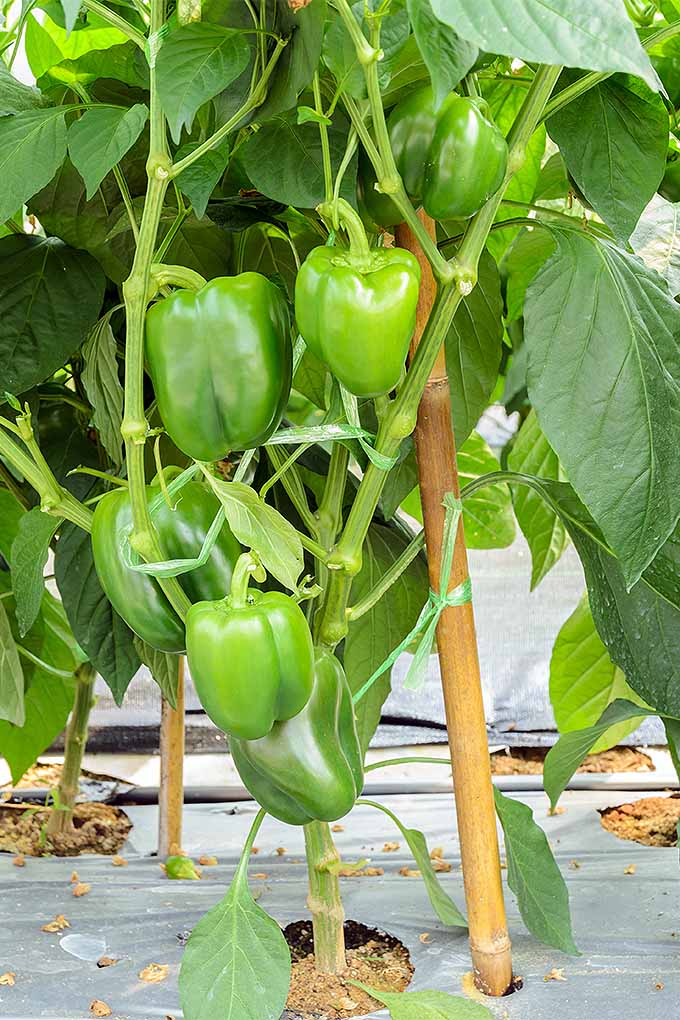
They will be sloth-like in growth if nighttime temperatures fall below 55°F. And if temperatures are too hot, they will likely start to drop their blossoms before ever having a chance to set fruit. This is why they’re considered a bit more temperamental to grow than some other veggie patch favorites like spinach or radishes.
Shallow roots and heavy fruits make bell peppers more likely to topple over, so consider staking them once flowers begin to form.
While fertilizing is helpful, be cautious not to over fertilize, especially with nitrogen. This is known to cause leafy green growth, but it will actually stunt flower and fruit production.
Bell peppers are in the Solanaceae family, along with tomatoes, eggplant, and potatoes. This means they share many of the same disease and pest issues, as well as nutritional needs. For this reason, you’ll want to avoid rotating these crops with each other in the garden.
Managing Pests and Diseases
Bell pepper plants are susceptible to overwatering or poor draining soils. So be aware of root rot and phytophthora blight, a fungal disease that causes permanent wilt.
Another issue linked to moisture stress is blossom end rot, which shows up as a dark, sunken area on the fruit. It’s fairly common and is a result of calcium deficiency.
However, just because plants are calcium deficient, this doesn’t necessarily mean the soil is. Rather, the issue could just be that calcium present in the soil is tied up for one reason or another.
For instance, if soil pH is too low, calcium uptake can be affected. Also, inconsistent moisture levels can negatively impact calcium availability.
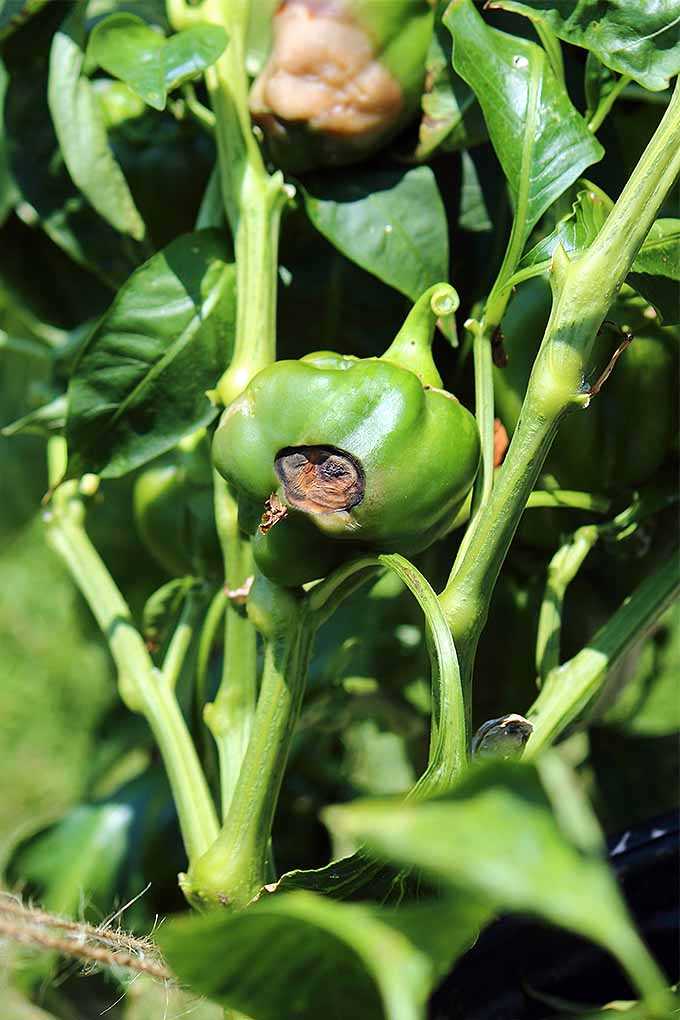
And, since roots are shallow, it’s easier to damage them when caring for and weeding your garden. Damaged roots aren’t going to be as effective in taking up needed nutrients.
Also keep an eye out for aphids, spider mites, stink bugs, flea beetles, and cutworms. Spray these critters with a strong stream of water, horticultural oils, or simply hand pick and squash all who are unwelcome.
The best way to mitigate all pest and disease issues is to maintain healthy plants within an optimal environment. Check your garden regularly and be quick to address any concerns. And do your best to invite natural predators into your gardens, such as birds, praying mantises, and ladybugs.
Find more tips on identifying and controlling pepper pests here.
Harvesting
Sweet bells are unique, since choosing when to pick them is mostly up to you.
If you love the flavor of a green pepper, pick a few when they’re full-sized with thick flesh but not yet beginning to turn shades of red, yellow, or orange (or purple! or brown!). The peppers will sweeten the longer you leave them on the plant, with increased vitamin C content as well.
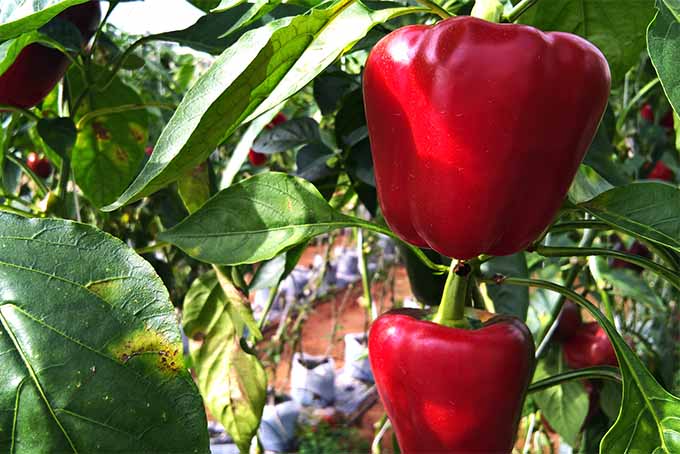
Make a clean cut with a knife or sharp scissors when harvesting, being careful not to topple or otherwise disturb the plant. You don’t want to knock off any fruits that are still developing, or cause any damage.
Wipe any excess dirt away with a clean, dry cloth and store in the produce crisper bin of the refrigerator for up to one week. Wait to wash until you’re ready to use them, since damp produce with become moldy and rot quickly in the refrigerator.
A Few Recipe Ideas
In addition to being delicious in a salad, or sliced into strips and served with a big bowl of homemade hummus, homegrown bells add texture and flavor to a variety of tasty dishes.
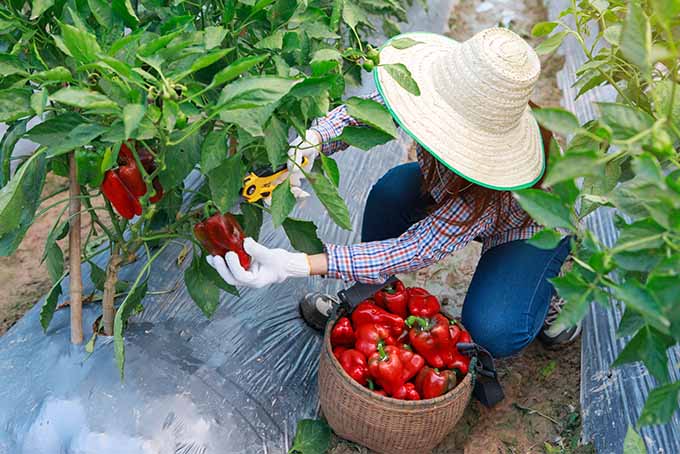
Try this recipe for Spiralized Sweet Potato Noodles with Roasted Red Peppers and Sun Dried Tomatoes from our sister site Foodal, or this homemade Harissa Sauce from our friends at Wanderspice.
Fajitas are a family favorite, and this Vegetable Fajita Sheet Pan Dinner from The Domestic Dietitian comes together in minutes. And you’re sure to love this Bean-Free Low FODMAP Chili from Erika’s Gluten-Free Kitchen.
For breakfast, serve up a cast iron pan-full of this irresistible South Asian Spiced Shakshuka with Bell Pepper and Spinach from Feast in Thyme.
And don’t forget, in addition to sharing with the neighbors, a big harvest gives you a chance to show off your home preservation chops. Roasted, they can be stored in oil. Or try parboiling, peeling, chopping, and freezing in individual packages for a quick add-in to toss into weekend omelets and egg scrambles.
Peppers can also be chopped and dehydrated for use in soups, or ground into a flavorful powder that you can add to your spice cabinet.
Worth the Effort
There’s quite a bit of information provided here, and it may seem just a bit overwhelming to take on bell peppers as a home gardener. So, I want to wrap up with a few key points:
- Start seeds early or buy good looking seedlings, and make sure to harden them off before transplanting.
- Wait to transplant into the garden until two or more weeks past the last frost date, since soil needs to be warm for plants to really take off.
- Mulch and keep water moisture consistent, since roots are shallow and susceptible to water-related stress.
- Don’t fret about what you can’t control – like temperatures that are too hot or too cold.
Keep these basics in mind and you’ll be enjoying some tasty sweet bell peppers soon enough!
Feeling confident enough to grow bell peppers this year? Let us know what varieties you try and how they come along in your part of the world.
And if you want to explore the world of peppers, some of these guides will be of use:
- How to Plant and Grow Poblano Peppers
- How to Plant and Grow Ghost Peppers
- How to Plant and Grow Anaheim Peppers
Product images via True Leaf Market. Uncredited photos: Shutterstock. With additional writing and editing by Allison Sidhu. Originally published by Lynne Jaques on December 31st, 2014. Last updated March 8th, 2018.
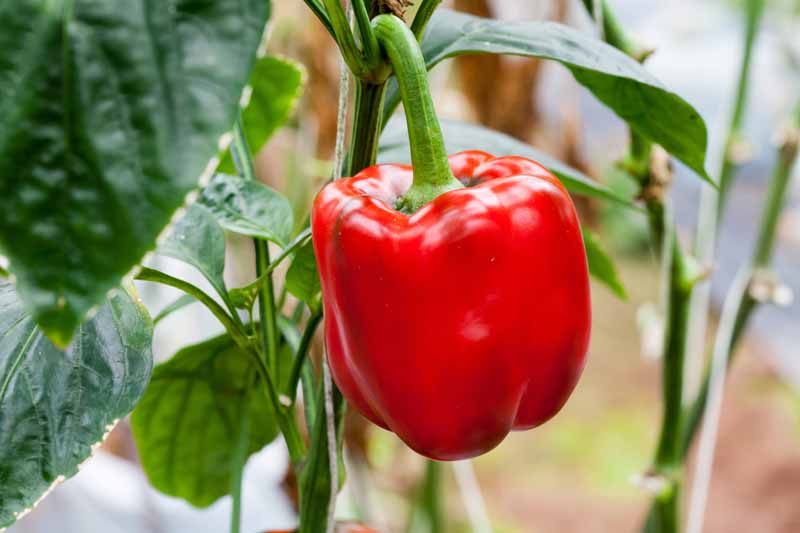
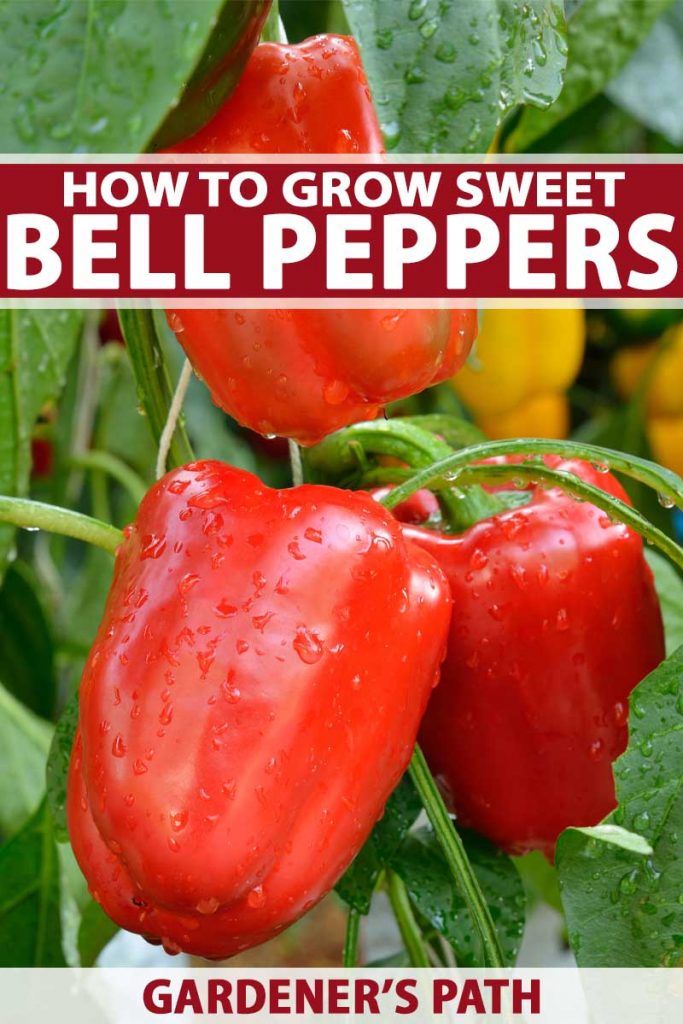
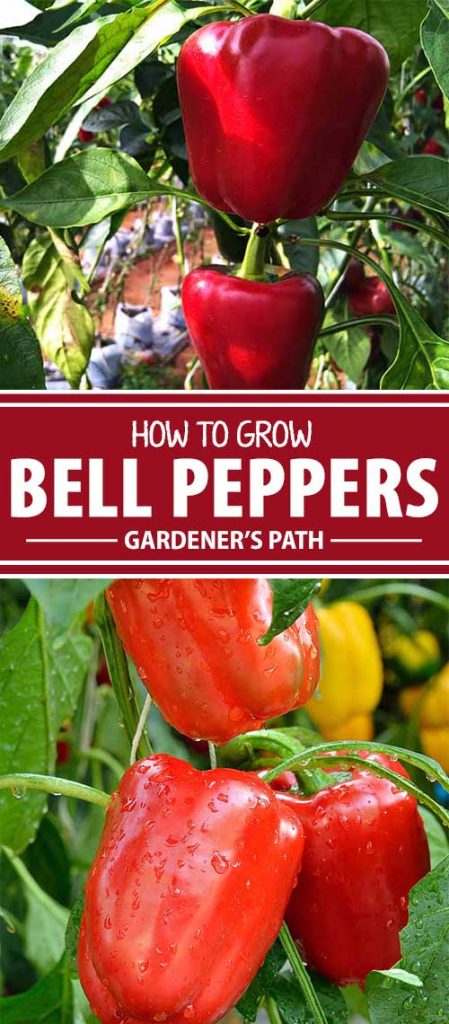
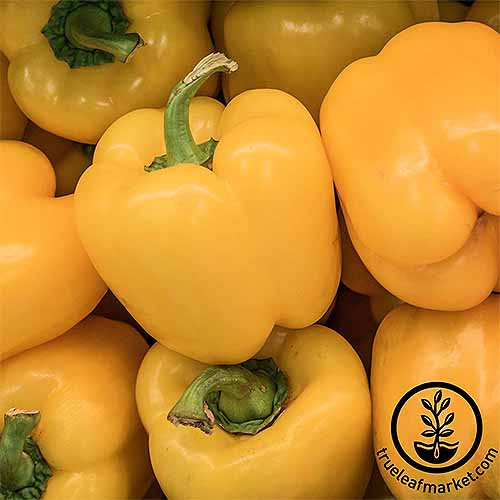
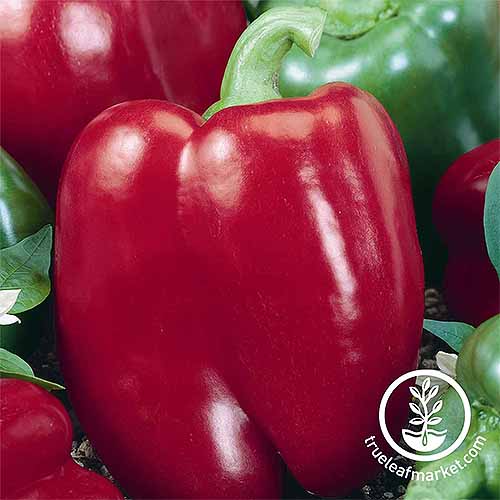
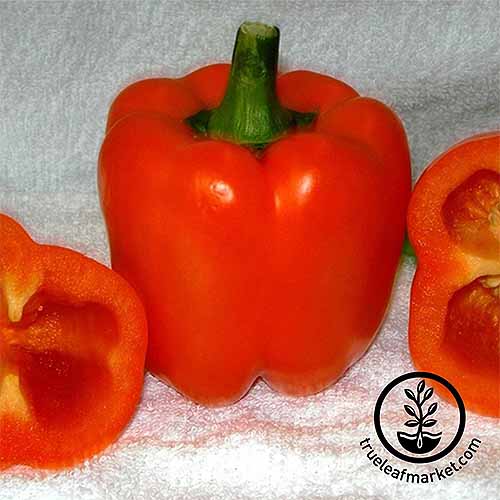
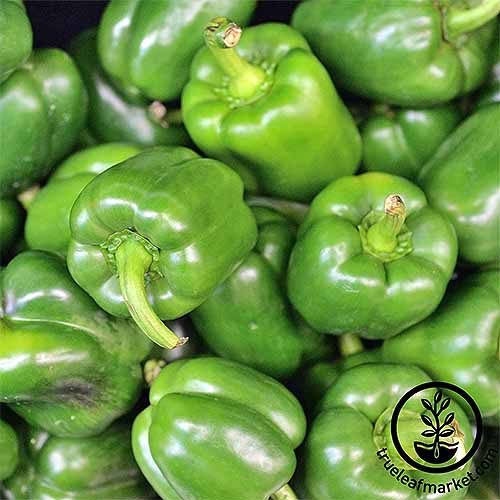
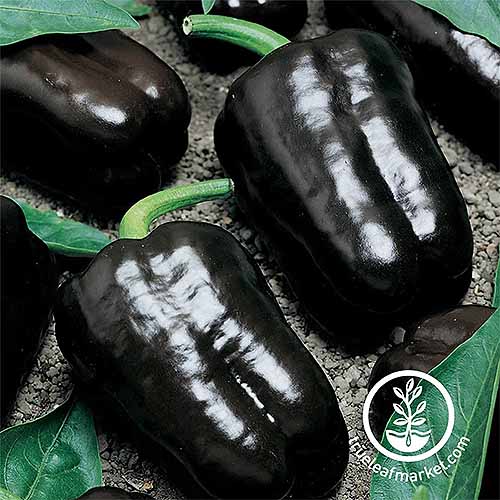
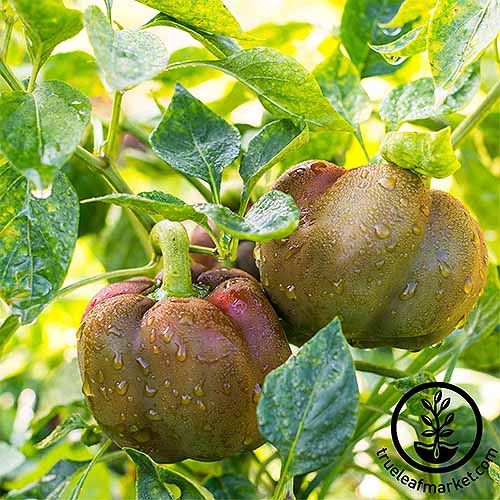
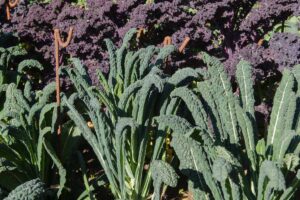
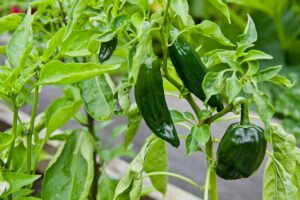
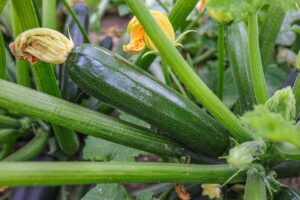
Thank you for your comprehensive detail on bell peppers. I am a very senior reader and tried some bell peppers, three plants in fact. All fruited, but I was disappointed that a lot of the flowers did not form into mature fruit, they just dropped off. Have you a quick answer please? Jan.
too much sun
I had the same issue and resolved it. In my case the issue was pollination. Shake the plant every few days by holding at the bottom of the plant.
You can also plan to move the plant where there is wind.
This certainly isn’t a “quick answer,” but I have about 30 years experience growing bell peppers, and in my gardens, any time the plants get the least bit dry/ droopy, they drop all their flowers without setting on fruit. In May 2020, in the state where I live, our weather changed overnight from highs in the 60’s to highs in the 90’s, and I lost almost every fruit on my 6 pepper plants. Keeping them well mulched cuts down on this problem, as it maintains a more steady moisture in the soil. My pepper plants recovered over the summer, as… Read more »
Thanks for your suggestions, Lydia! Shade cloth can also help to protect pepper plants from dropping flowers during heatwaves, with plenty of supplemental water provided in addition to the moisture-retaining mulch.
In my 6 months trial this past growing season with bell peppers, this happened to me for the last 2 healthy bell peppers plants that made it through the growing season through pest problems and heat trials/struggles (out of the 10 total bell peppers I initially planted where 8 wilted and died). I believe a few things could be problematic if flowers are just falling off. Most likely the soil is not rich enough in phosphorus or potassium or both and a soil test is needed to determine if your soil is depleted of these two things making the soil… Read more »
Thanks for this really great post. I really enjoyed reading about ways to manage pests and deficiency. This is something that is VERY good to know, I’d say. Thanks!
I have great plants but no fruit. They did flower some but they have gone away and still nothing. What am I doing wrong?
This can be a case of too much nitrogen fertilizer – plants will put their energy into producing foliage rather than fruit.
I’ve been told that you can protect your pepper plants during the winter months and continue to enjoy their fruit the next season. If so, how do I protect my plants during the cold season? I reside in the Roanoke, VA area so we do get below-freezing weather. Thanks
Are you growing your peppers in containers Steve, or in the ground? Peppers are semi-tropical and overwintering is easiest to achieve in warmer growing zones. In Virginia, they’ll respond best if you are already growing in containers and are able to bring them into a greenhouse or indoors for the winter. Place pots in a protected, warm, and brightly lit location. Some types of peppers may respond better to this treatment than others, with the most likely outcome being that they remain alive but go dormant for the winter, and start putting out new growth again with the return of… Read more »
How do l solve the calcium deficiency? Tnx
Put a TUM in the bottom of the pot at the root line.
I haven’t tried this, Joni. Has it worked for you? This would certainly add calcium carbonate to the soil, which is also the chief component of calcitic lime. Dolomitic lime, also used in gardening, is comprised of calcium magnesium carbonate.
What is a tum?
TUMS is a brand of antacid tablets. Calcium carbonate is the active ingredient in these.
Raising the soil pH can help. I would recommend testing yours with pH strips or doing a soil test to see what’s going on in terms of the nutrients that are available to your plants and the acidity of the soil. Consistent watering also helps with calcium uptake. For more information, see our article on blossom end rot. Though this article is focused on tomato crops, you can see similar issues in pepper plants.
Excellent excellent info on growing sweet peppers. Don’t put me on a mailing list. I’ll stay up with you.
Thanks John!
Really well written and informative. Thanks much for sharing.
Thank you for reading, Jeremy!
I have bell peppers that look lush and green but while checking the plants yesterday I FIND BLACK SPOTS where the leaf stems attach to the plant stem! Fungus, mole, black spot??? Need advise PLEASE
Hi Rose, I’m so sorry to hear that your pepper plants have spots on them. Could you possibly post a picture? That would help a great deal. From what I understand, some black spots are normal. However, black spots on the stem can be due to a horrible organism called Phytophthora. If that’s the case, you would need to take preventative measures. However, if your plants were infected with that organism, they would probably be showing other symptoms like severe wilt. So hopefully that is not the case. I may be able to figure out more if I see a… Read more »
Hi I am new to growing peppers from seeds and thought I’d try it this year. I had 2 pretty healthy red pepper plants that I had been taking in and out to get them use to the outdoors. I live in Indiana where the humidity is high and often sucks the life out of plants. It has been pretty hot lately, so I figured the ground was warm enough. I planted them in mulch as I do plants that I purchase. Second day they were planted they drooped over and the top of the plant fell off when I… Read more »
Hi Lori! I’m sorry to hear about your little pepper plants. It’s no fun when carefully cared for plants up and wilt like that. How big were the plants when you put them in the garden? Pepper plants should be about 6-8 inches tall, with a few unopened buds, before you put them outside if you’ve been growing them indoors. It may be that they were transplanted a little early. Also, if the soil isn’t well-draining, it’s possible that the heat plus the humidity, along with the watering the night before, could have overwhelmed them or even caused… Read more »
Thanks so much for answering my questions. I’m fairly certain I put them in the ground too early. I guess being a newbie and getting too excited can get you in trouble! I do have another that I am growing and am curious, is it more important to keep warmth under it for the soil to warm to 65° or is putting it outside during day a better idea? I’m also trying to grow a mixed color pepper.
Hi Lori! You can probably put it outside now, as it’s almost certainly warm enough. Just make sure you harden them off for 3-5 days before planting out.
Hi ! I live in Arizona it’s around 105 degrees. My peppers are struggling. When the monsoons roll in the humidity picks up. My garden starts greening up again because the dry heat isn’t pulling the moisture out of the plants. If you grow plants indoors with out good grow lights , the plants will stretch for light and become weak. So when you put them out in the direct sunlight they die.
Hi Adam! Thank you for your comment. Carol O’Meara, expert at the Colorado State University Extension office, recommends shade cloth to help keep peppers from getting too hot. Their ideal growing temp is between 70-90, so 105 is definitely going to take its toll. And of course, keep those peppers watered during those dry spells! 🙂
Hi, I am growing some peppers and Peruvians chile plant but they got mixed up . Now I don’t know which one is which and I need to transplant the chilli in a very big pot and the peppers in small ones . Do you think you can help me please ? Also I would like to prune my peppers shall I do it after transplanting them or before? Thankyou
Do you know what species of Peruvian chili it is Naty? There are several varieties of Capsicum baccatum grown for their fruits and you may have to wait until they flower to be able to tell them apart… unfortunately, to my eyes, your plants look identical. I suggest you transplant them to intermediate pots until they begin flowering, then you can transplant the chili to a larger one for the rest of the season. Once the flowers appear, use a plant identification app to tell them apart. And wait until your plants are at least 12 inches high… Read more »
Can u tell me what this is
I suspect your problem is anthracnose, a fungi that can overwinter in and on plant debris, seeds, and soil. It grows in moist, warm conditions and is spread by insects, rain, splashing water, and wind. And unfortunately, there are no species of bell peppers resistant to the pathogens. Infected plants should be removed and destroyed, and any garden tools used on the plants need to be disinfected to prevent further spread. Also, don’t collect any seeds from infected plants, and practice crop rotation. For new crops, apply a bio-fungicide or neem oil to young plants to… Read more »